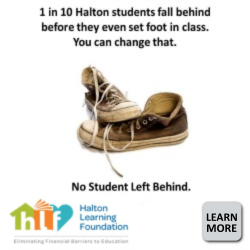 By Staff By Staff
August 30th, 2020
BURLINGTON, ON
Beth Martin Snook, the mother of two who Created Burlington Caremongers – renamed it Burlington Together and went on to attract 8000 people who became part of a group that worked well together.
She decided to share some group stats. By working together, donating, and connecting this group has been able to do amazing things! Cannot wait to see what we can do together in the future.
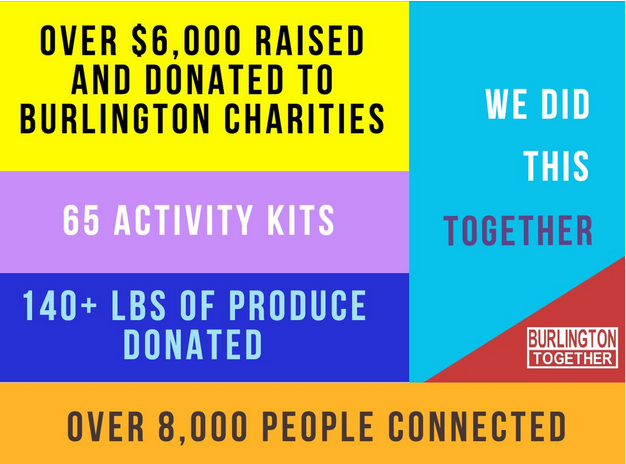 Impressive stats – no matter how you look at them. The people who took part in what started out as a Gazette initiative and soon grew to the point where a team of about 30 people got involved in the cutting of cloth to be made into masks, then making the masks , then preparing them for delivery to various community groups including two city Councillors.
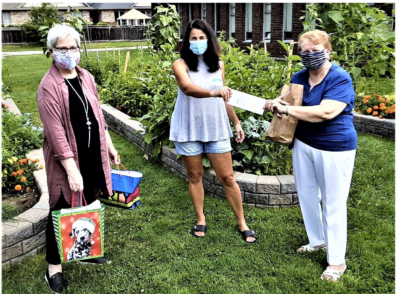 Connie Price, right and Penny Hersh, left with Lisa Lunski do the handover of the last batch of the more than 3,000 masks that were made. Connie Price, right and Penny Hersh, left with Lisa Lunski do the handover of the last batch of the more than 3,000 masks that were made.
What was particularly interesting was the way in which the design and fabrication of the masks changed as new people got involved and added their skill sets and experience.
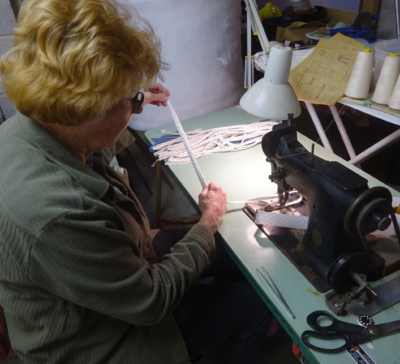 Jan Mowbray at her bias binding-making machine stitching together the ties used in early versions of the face masks. City Councillor Shawna Stolte with her daughter wearing masks from the Gazette initiative. 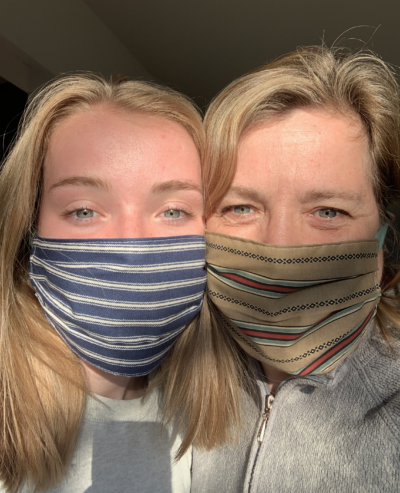

 By Pepper Parr By Pepper Parr
August 30th, 2020
BURLINGTON, ON
The province announced that 500 +/- nurses would be hired to assist the return of students to school.
 Every retired nurse in the province is going to want to take a closer look at this opportunity. What wasn’t at all clear at the time was who would actually do the hiring: the schools – they didn’t think so. The Regions – probably but they were still working their way through the document they got from the province and working out terms and conditions.
Meanwhile every retired nurse in the province who can find their little white cap with the black stripe would be lining up for what looked like an easy assignment.
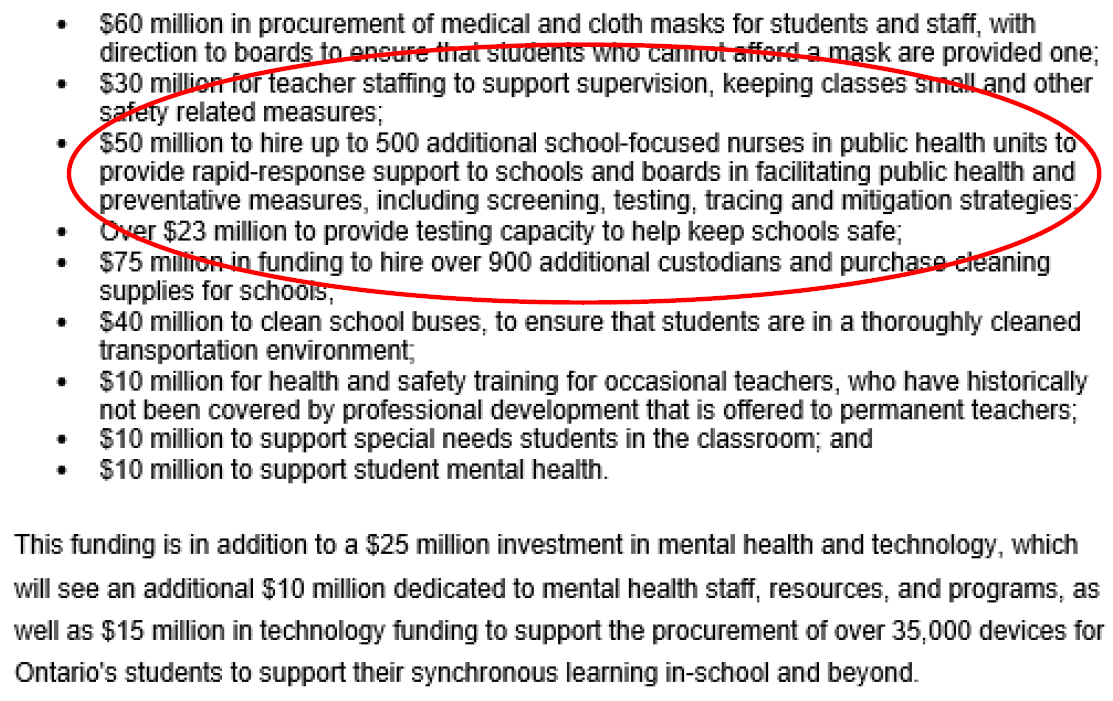 Not enough to put a nurse in every school but there should be enough to create a core of nurses at each Public Health Unit who can respond quickly. In its statement Halton Region set out what they expected – subject to a firm agreement in place of course.
Expected roles for School Health Nurses
Support existing school health and communicable disease control programs in public health by:
• Providing support to school boards and schools in the development and implementation of COVID-19 health and safety plans
• Providing sector specific support for:
• Infection prevention and control
• Surveillance, screening and testing
• Outbreak management; and
• Case and contact management
• Supporting communication and engagement with parents and local communities, as well as the broader health care sector.
With schools actually re-opening on the 14th – there will be enough time to get the nurses hired and train them for the task that will last until the end of the year.
The question in the air is – will there be a second wave and will Halton see very much in the way of infections?.
A school board just outside Montreal where schools opened last week reported a teacher who was found to be infected on the first day back in classrooms. Isolation for all the children she was teaching along with her own social circle.
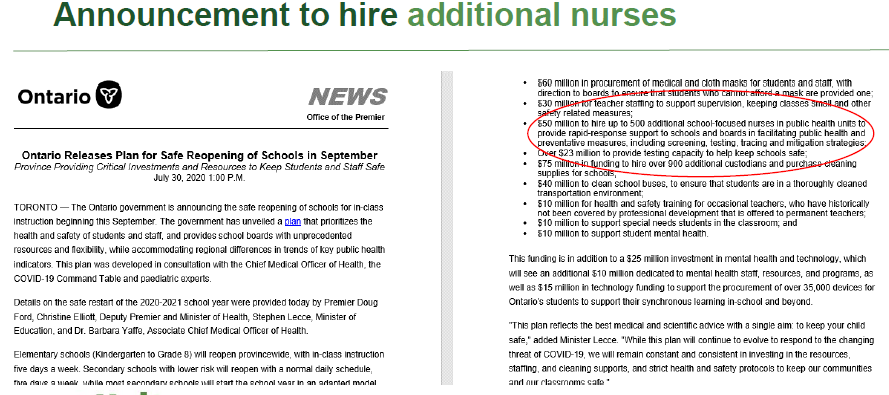 The provincial announcement was made late in July. 
  By Burlington Terry Fox Run Committee By Burlington Terry Fox Run Committee
August 29th, 2020
BURLINGTON, ON
One thing that’s been a staple of the Terry Fox Run through the years is the commemorative t-shirt. For some, it’s a collector’s item, for others it’s a donation to the cause. Regardless, there’s always plenty of talk when the new t-shirt design is released by the Foundation.
I was fortunate to have “tuned in” to the Foundation’s monthly Zoom meeting when Fred Fox, Terry Fox’s brother, unveiled this year’s shirt design. For the 40th Anniversary, the Terry Fox Foundation held a design contest and this year’s shirt was created by Nick Jones of Saskatchewan. Congratulations, Nick!
 Cindy May in her red T-shirt. Running the mechanize tent has a very special meaning for her. Cindy May
To talk about the significance of the Terry shirts, merchandise and Terry’s Team, I talked to the Burlington Terry Fox Committee’s merch expert, Cindy May. While she’s stepping back for 2020 due to the fact that there will be no event to sell shirts at, she did reflect back on her role in selling the shirts over the years.
Before we get into that, Cindy’s story is an important one.
“I first joined [the committee] when I moved to Burlington 10 years ago” said May.
She was looking for a way to get involved in her new community and had personal reasons for choosing Terry Fox.
“I actually had the same cancer as Terry Fox, osteogenic sarcoma,” said May, “I had it in my right arm. I had that when I was 17.”
She credits Terry Fox and the Foundation for all the advances that have been made since Terry’s diagnosis in 1977.
Thirty-two years ago, Cindy had a life-saving surgery that allowed her to keep her arm, something that was less possible when Terry was diagnosed a decade prior. She received several follow-up treatments after her procedure to prevent the cancer from spreading to her lungs.
 Cindy May, centre, in one of the merchandise tents with a couple of her volunteers. As a cancer survivor, Cindy gets to wear probably the most significant type of Terry Fox shirt one can get and that’s the red shirt for Terry’s Team.
Terry’s Team
Over the years that Cindy has been selling the shirts on run day, people have commented on her red shirt asking if they can buy one. And while the red shirts are attractive, it’s not a shirt anyone should wish to wear.
The red shirts are not for sale, but rather are given to cancer survivors and fighters upon registration. When you register you are asked if you are a member of Terry’s Team (aka you have or have had cancer). The red shirts are a quiet reminder of how much cancer has touched our lives – a nod to survivors acknowledging the prevalence of this disease in our communities.
While survivors like Cindy are proud to be part of Terry’s Team, our ultimate goal is to reduce the number of red shirts we see.
Our hope is that the more money we raise, the fewer red shirts we will see in the future.
Tales from the Merch Tent
Cindy didn’t start in the merch tent during her first year on the committee. Prior to running the t-shirt tent on run day, Cindy and her graphic designer husband Agostino, worked on the “Dedication” and “Thank You” boards.
After three years of working on the dedications boards, she took over shirt sales on run day. One year, the tent was decorated with all the shirts from past runs – showing how the designs had changed over the years.
When I asked for her thoughts and memories of run day she said, “it’s a great day. It’s always a great day. We raise a lot of money. I enjoy doing it. It’s my small part.”
Roles big or small, the Burlington Terry Fox Committee is full of incredible, selfless people, like Cindy May, who do their part to continue this proud Canadian tradition.
Shirts for Cancer Research

 The 40th anniversary T shirt – available now. By purchasing the new Terry Fox t-shirt or other merchandise each year you are supporting cancer research. Because Cindy won’t be able to set up shop on September 20th to sell shirts this year, we encourage participants to purchase shirts when registering for this year’s run. You can also reach out to the Burlington committee to see what we have available.
If you are a member of Terry’s Team, be sure to indicate that when you register to get your red shirt.
Hopefully we will all see Cindy’s smiling face at the Merch Tent in 2021!
Craig Gardner is co-ordinating shirt sales from his home. People are either picking them up or he delivers locally. We accept cash/cheque or e-transfer.
We started with about 120 shirts in various sizes (Unisex 6X and YM(size 10) for kids at $15 each and s/m/l/xld xxl for adults at $20 each) and have sold almost half in the past 3 days.
Gardner is going to try to order more; he isn’t sure if he will be successful as the foundation ordered fewer in general as they thought it would be a slower year. Not in Burlington. You can reach Craig at: scraiggardner@sympatico.ca

 By Pepper Parr By Pepper Parr
August 28th, 2020
BURLINGTON, ON
In a statement released by the Halton Region Public Health office we learn that they “continue to work closely with the Ministry of Health, local school boards and community partners to ensure all students return to a safe learning environment this September.
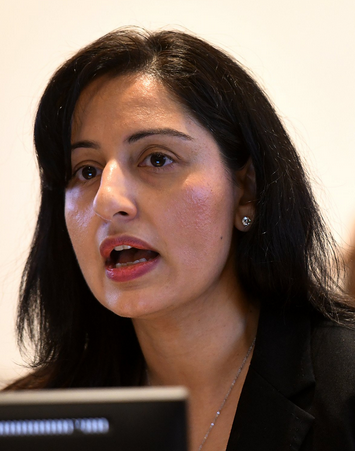 Dr Meghani, the Regional Medical Officer of Health “This includes providing recommendations to school boards for reopening to be considered in conjunction with directives and guidance provided by the Province. The school boards decide what measures to implement based on their circumstance.”
The key words are that the school boards make the decisions.
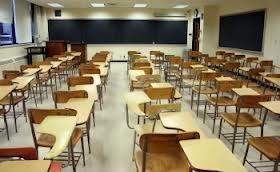 Setting this classroom up so that the students are six feet apart if not going to be an easy. As families prepare for the start of the school year, Halton Region Public Health is communicating directly with parents in several ways, including a video, a letter and webinar events (the HCDSB webinar was Tuesday night and HDSB webinar was Wednesday evening,”
Halton, like the rest of the province is “waiting to hear from the Province about the terms and conditions on funding to hire nurses, however there are many public health nurses and several staff who are already supporting the school administrators and community. We will also be recruiting temporary nurses to help with our efforts in schools.”
The decision by the Halton District School Board to move the opening up of classrooms to the 14th of September with some students being introduced to their classroom the week before, has school principals scrambling to learn which parents have decided to send their children back to the classroom and how many have decided to have their children stay at home and learn on line.
A Milton parent set out the concern many have about sending their child into a classroom; she said: “I’ve decided to keep the kids home for the foreseeable future.
“I’ve had to drop most of my volunteer commitments to focus on work and the kids. It hasn’t been easy but we have settled into a nice routine and are enjoying the time that we have together. This whole COVID thing has forced me to really take a deep look at my priorities and for now it’s my family.”
School principals have to work on a class by class, grade by grade level to learn what the population of the school is going to be. With this data they can determine how many students will be in a class. If sufficient numbers decide to stay home a principal may have to combine classes.
Logistically it is a bit of a nightmare.
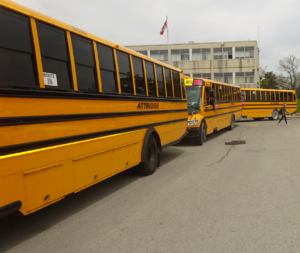 Short trips – full loads. School busing just another potential problem area. Getting students to school is a challenge as well. Those who take the school bus (many really have no choice) will find that the most recent plan was to fill each bus but to make the trips as short as possible.
The Board’s Superintendents have all been assigned to specific problem areas: elementary, secondary, mental health – name the problem and there will be a senior staff person on top of it and tracking the problems.
These people have been working flat out since March when they found that they had to recreate the way students were to be educated amidst an environment where the province took the time they needed to determine what was safest and the most politically expedient.
The virtual Town Hall did give the public a good opportunity to ask questions on Wednesday and Board senior staff were able to provide answers. There wasn’t a lot of good news.
Parents can forget the idea of actually entering a school. The doors will not be open to a parent who wants to meet with and talk to a teacher about problems with their child.
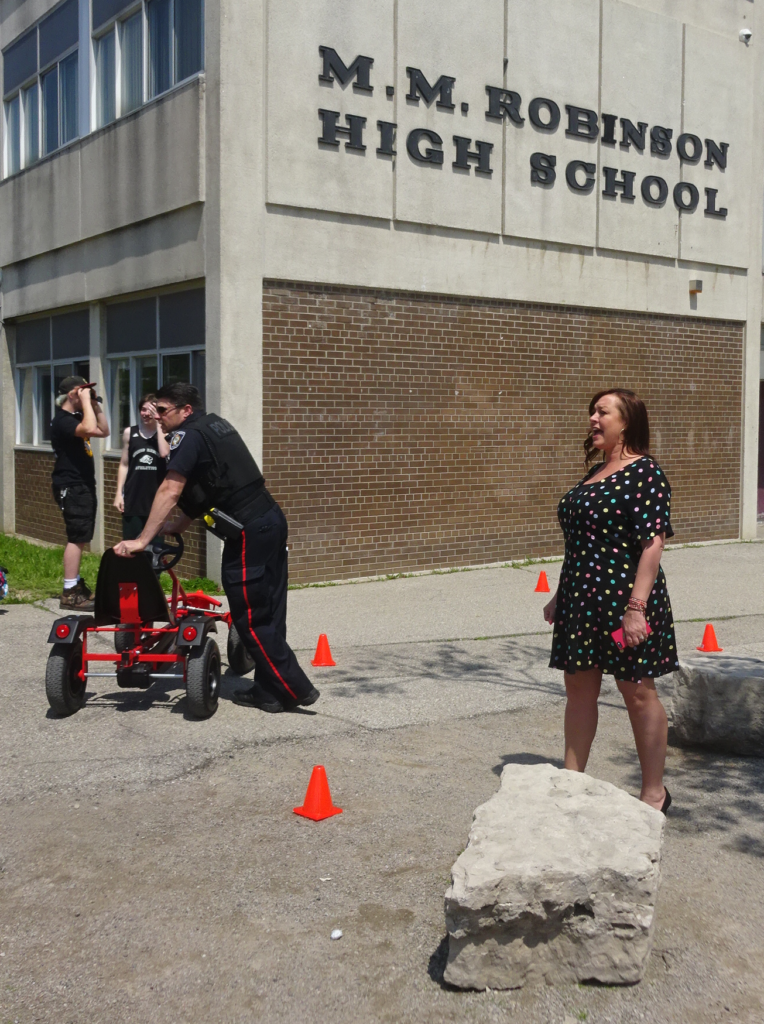 Teaching the high school students to stay within their cohorts is going to be a challenge – one MMR principal Claire Proteau is up to. Given what we know about covid-19 – and there is a lot that is not known – the focus is now on limiting as much as possible who students interact with.
This virus is spread from person to person – the solution then is to limit the number of people a student interacts with.
Every student will bring with them every person they and members of their family have interacted with and then interact with fellow students who bring the same thing with them.
Situations like this drive the public health people crazy – they wait, poised, to move quickly when there is a sign that there might be an infected student in a school and if there is they move immediately to trace the contacts and inform them that they need to self-isolate.
All it takes is for one high school student to go to a party, pick up an infection and bring it back to their class and spread whatever they might have picked up.
There is a huge bureaucracy in place to deal with the problems – and there will be problems.
The first line of defence is in the homes – explaining to students who see themselves as invincible, that they are both part of the problem and probably the biggest part of the solution.
We are about to find out how good we are at taking care of ourselves as a community.
–

 By Pepper Parr By Pepper Parr
August 27th, 2020
BURLINGTON, ON
During a two and a half hour virtual Town Hall meeting last night parents with children attending the Halton District School Board (includes Burlington, Oakville, Milton and Halton Hills) learned that school will not start on September 8th, but will instead start on September 14th.
Some students will be “introduced” to their school the week before.
 Masks will be required – all grades 1-12 Masks will be required in every grade from 1 through to 12.
The Medical Officer of Health has recommended that Junior Kindergarten and Senior Kindergarten (JK and SK) also wear masks.
Students will get mask breaks during the day.
The public heard a half hour presentation from the Medical Officer of Health during which she set out the rules that will ideally contain the spread of the Covid-19 virus, which in Halton has been quite low.
Parents had been asked by the Board to return Intent to Attend forms so that the administration could determine which form of education students would be taking – in the classroom or virtually at home.
Parents wanted more information before sending in the forms – the school board wasn’t able to give out information because they didn’t know what the class sizes were going to be – a classic Catch 22 situation.
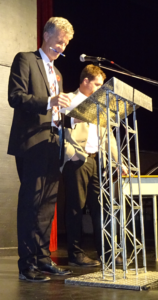 Director of Education Stuart Miller Earlier in the month the board administration had announced that it was creating virtual schools, which they would need in the event of a school- or system-wide shut down.
It was first seen as something that might be needed – that might turned out to be necessary when more than 1600 students decided to not attend a school – they have chosen to be educated virtually.
The virtual schools will not be “local” – they will include students from within the Region.
There will be three virtual schools for the Region and a single virtual high school.
Details were a little sketchy – parents were told that all the information they needed was “on the web site”.
The Gazette will chase down the details in the days ahead.
School is going to be very different come September 14th.
Director of Education Stuart Miller in his closing remarks advised parents to “trust their own judgement”.
“Staff are nervous” he said. “I am nervous”. “Trust your own judgement” when deciding which form of education your children are going to get.
A Milton parent said to a friend and shared with the Gazette:
“I’ve decided to keep the kids home for the foreseeable future.
“I’ve had to drop most of my volunteer commitments to focus on work and the kids. It hasn’t been easy but we have settled into a nice routine and are enjoying the time that we have together. This whole COVID thing has forced me to really take a deep look at my priorities and for now it’s my family.”


 By Ray Rivers By Ray Rivers
August 23rd, 2020
BURLINGTON, ON
Did you know that Germans are now able to buy a brand new Renault electric vehicle (EV) for the cost of a cell phone contract?
 Germany has gone further than most countries to promote the use of electric vehicles. The Renault can be had for the equivalent of a cell phone contract. Yes, new EV subsidies there almost completely cover the cost of a new economy car, providing it’s of the plug-in variety. Europeans have always taken climate change seriously and are more prepared to take action than the rest of us – but even they are not doing nearly enough.
We, the people on this planet earth, keep breaking records on just how much climate warming pollution we generate.
2019 hit a new record, pumping 36.8 billion metric tons (gigatonnes) of carbon dioxide into the atmosphere. Thirty-six gigatonnes (Gt) ! It’s like we are in a competition to see how fast we can waste the planet.
To put that into context, if we took all the land mammals on the planet and put them on a scale they’d weigh one whole gigatonne. It is estimated that the entire human race together would weigh less than half a Gt. So that’s a lot of carbon pollution and it has led to a higher concentration in the atmosphere than at any point in at least the past 800,000 years.
The thermometer in Baghdad soared to 50 degrees C the other day. That’s 125 F, which is the ‘keep warm’ setting on my kitchen oven. And whether you measure it in Fahrenheit or Celsius America’s Death Valley won the title of hottest place on earth at 130 degree F (56 degrees C). And as you should expect, mother earth is responding to these carbon emissions even faster than anyone predicted.
 One of the largest ice packs on the planet. One of the largest ice packs on the planet, Greenland’s ice shelf, has passed the tipping point and is irreversibly melting faster than you can shake a stick. Combined with the rapidly increased melting of ice in the Antarctic, Canada and Russia, the US Geologic Survey, estimated that the world’s oceans could eventually rise 70 metres (230 feet) in a bunch of years. 70 metres is like 45 people standing one on top of each other.
The land below and adjacent to the ice caps is called permafrost, because it never used to thaw. Sealed in by frozen ground for millennia, since the last ice age, there are all kinds of treasures buried there, including some more very ancient viruses. There is also a lot of methane, the stuff you burn in your furnace. It’s from very old decayed vegetation.
It is estimated that there could be 1400 gigatonnes of carbon locked up as methane under the Arctic submarine permafrost alone. Methane is something like 32 times more powerful as a greenhouse gas than CO2. So if the scientists are right about potentially releasing those 1400 Gt of methane – do the math – we’re in for one helluva a party. And did I mention there is even more permafrost thawing on the land in northern Canada and Russia?
Further, scientists are now connecting global warming to a puzzling shift of the earth’s axis. Over the last 20 years there has been an increasing drift of the north pole away from Santa’s workshop in Canada’s north. That can be attributed to the melting of Greenland’s ice sheets. Greenland has been losing over 200 gigatonnes of ice a year since 2000 increasing the volumes in the oceans in the process. Meanwhile Antarctica has also lost over 90 gigatonnes.
 Will the changing climate have an impact on the earth’s axis – and if it does what impact will a change in that axis have on the lives we live? As the weight of the ice lifts off Greenland the poles start to migrate. It is uncertain what all this means for us planetary inhabitants, aside from our GPS devices needing some kind of updating, and poor Santa of course. But weather patterns will no doubt be heavily impacted as the rotation of the planet is affected.
So the impacts of warming the planet are not just about more flooding, more violent storms, more droughts and more massive forest fires, which in turn just add more carbon into the atmosphere.
COVID-19 might be the most immediate crisis before us now but global warming is the greatest existential threat we face. Yet we’ve all known about climate change for at least four decades and have failed to seriously respond to this growing crisis – a crisis which will be far more deadly than COVID-19.
An EV in every household Is a good start. And Germany is not the first jurisdiction to offer carrots instead of sticks to get their citizens to curb their carbon footprint. About half of the cars sold in Norway are fully electric, for example.
Ontario’s last government also offered generous EV subsidies. They started building a viable carbon-free electrical system, a viable carbon emission trading program and so much more. But we the voters clearly didn’t care about all that. Instead we voted in a government that clearly doesn’t get global warming, and has done it’s best to tear down all of those efforts.
Next time we’ll address why this is happening.
Meanwhile please join the discussion. As we said, perhaps too often, going into COVID – we’re all in this together as well.
 Ray Rivers, born in Ontario earned an economics degree at the University of Western Ontario and a Master’s degree in economics at the University of Ottawa. His 25 year stint with the federal government included time with Environment, Fisheries and Oceans, Agriculture and the Post office. Rivers is active in his community; he formed the first Sustainability Committee in Burlington. Ray Rivers, born in Ontario earned an economics degree at the University of Western Ontario and a Master’s degree in economics at the University of Ottawa. His 25 year stint with the federal government included time with Environment, Fisheries and Oceans, Agriculture and the Post office. Rivers is active in his community; he formed the first Sustainability Committee in Burlington.
Background links:
Iraq Oven Temp – Hottest Temp Ever – 2019 Record
Canada Last Ice – Europeans – Free Car –
Greenland Ice – Earth’s Axis – Permafrost –

 By Pepper Parr By Pepper Parr
August 25th, 2020
BURLINGTON, ON
Parents are concerned, somewhat confused and not at all certain what is going to happen when the schools are re-opened.
The Halton District School Board is holding a Town Hall meeting on Wednesday and will be doing everything they can to answer the questions parents have.
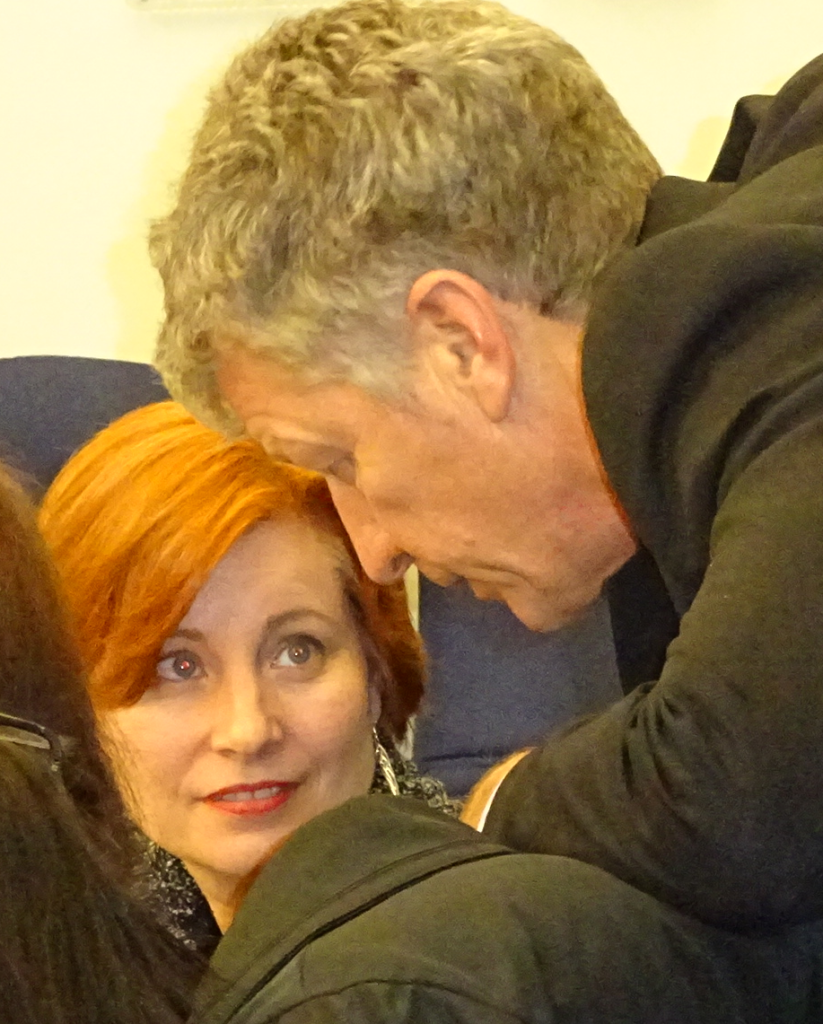 Trustee Chair Andrea Grebenc with Director of Education Stuart Miller The Director of Education will have his team of Superintendents on hand to get into the specifics.
This team has been at it since March – learning that the system was being shut down meant these Superintendents didn’t just have to pivot – they had to do a 180 and make something happen with little in the way of resources or prep.
Director of Education MIller put it very well when he said: “They didn’t teach us this in principal school”.
Each of the Superintendents has been given an area of responsibility. They have taken their years of experience as classroom teachers and the lessons they have learned as Superintendents and a got teacher in front of students even if it was via the internet.
Parents were upset, students didn’t know what was going to happen each day.
It took a bit of time but the technology to reach out and communicate was found and implemented.
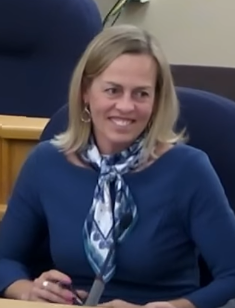 Superintendent Terri Blackwell running lead for the secondary students, Superintendent Terri Blackwell was assigned to the Secondary school problems and the challenges.
Superintendent Scot Podrebarac took on the elementary students.
Both worked tirelessly with the school principals to help them deal with the students and the parents. There were challenges everywhere and few in the way of easy answers.
 Julia Hunt Gibbons – crunched the numbers to determine what could and couldn’t be done. Superintendent Julie Hunt Gibbons was the numbers person. What would work and what wouldn’t work. Hunt-Gibbons had to take the number of classes, the number of students and come up with options in terms of how the Board could create a schedule that would let the board create a class with 15 to 20 students. She didn’t do it with a slide rule.
When the province said that normal class sizes would prevail – Superintendents gave each other one of those Huh! looks and went back to the numbers.
How do you keep 30 grade 3 students six feet apart in a standard classroom size? Was that possible?
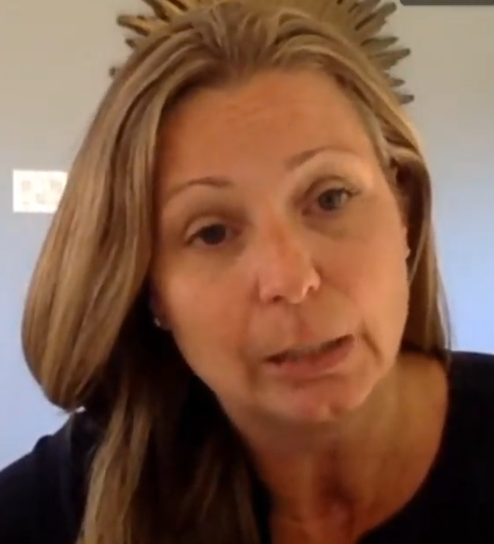 Colette Ruddock – the heath of every student is her mission. Superintendent Colette Ruddock is overseeing the relationship between the Board of Education and the Public Health Unit.
How will the Public Health people work with the schools – one on one? Who in a school makes the decisions? We were told that the Director of Education believes he has the authority to close a school.
We will learn going forward what Ruddock is going to do – we know now that she is the contact person with the Health people.
There are nurses being brought in by the province but the school boards don’t see the nurses as part of their staffing compliment.
How long can parents and students get on with their lives under these conditions? No one knows – there are really more unknowns than there are knowns.
The Toronto District School Board has been setting the pace in terms of talk back to the government. With the exception of the stiff letter the Halton Trustee Chair sent the Minister of Education.
 This is what it all comes down to – a student in the hands of a good teacher. Will the school start be later – September 15 is a date being thrown around. Will the return on the part of the students be staggered? A couple of grades one day and a few days later other grades will be added with everyone being in place by the end of the first week.
Gearing up for the day students enter a school is work enough. Behind the scenes there are people across the province giving serious consideration and actually working on what a virtual education system would look like.
If there is the much expected second wave, which will be harsher than the first wave, and everything goes back into lock down – what then?

 By Burlington Terry Fox Run Committee By Burlington Terry Fox Run Committee
August 25th, 2020
BURLINGTON, ON
*Disclaimer: The Terry Fox Run is a grassroots event with no corporate sponsorship. We rely on our community for support to make this possible year after year. One of the ways that we raise more money for cancer research is to encourage companies and families to participate as a team. Teaming Up for Terry helps motivate members, encourages fundraising with goals and challenges and promotes cooperation and team-building. We are honoured to have so many supportive teams running and walking in the Burlington Terry Fox Run. Team adidas is one of those teams.
Teams are such an important aspect of the modern Terry Fox Run. And one of the biggest teams across Canada is Team adidas. Though the Terry Fox Run has no corporate sponsorship, adidas has been a supporter since the very beginning. It all started with a pair of shoes.
We simply cannot talk about Team adidas without mentioning the iconic blue and white running shoes that Terry wore during his Marathon of Hope. On November 3, 1979, a 21-year-old Terry Fox wrote a letter to adidas asking for a donation of 26 pairs of running shoes. As a broke university student who had been sidetracked by cancer treatments, Terry didn’t have the financial means to fund his dream alone. The rest is history.
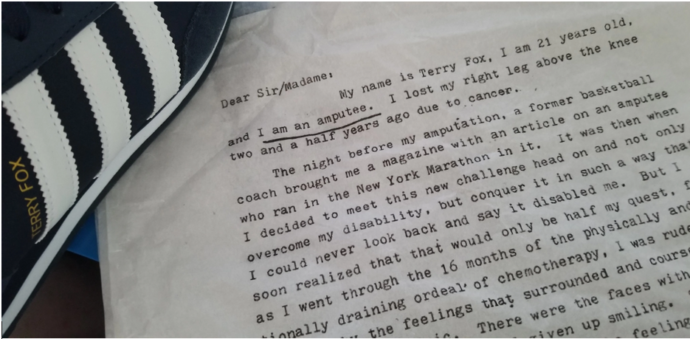 Tissue paper inside the adidas Terry Fox limited edition shoe box. This year, adidas released replica shoes to celebrate the 40th anniversary of the Terry Fox Run, along with various limited-edition Terry Fox t-shirts.
“Forty years ago, a young man had the courage to reach out and ask for help to embark on mission to bring awareness to a horrible disease that affects so many of us.” – Janette Wilson, Executive Assistant at adidas Canada.
Meet Janette Wilson
Though I could write an entire blog on the adidas shoes and how they’ve become synonymous with courage and determination, this post is about Team adidas. In order to get both a national and local perspective on the team, I reached out to Janette Wilson, Executive Assistant to the President at adidas, Chairperson of Team adidas and Burlington resident.
 Team Wilson – On the left – Janette Wilson, Executive Assistant, husband Sean, daughter, Alex, Granddaughter, Sydnee and Mike on the right – Mike (Alex’s Fiancé) Janette Wilson has been with the organization since 2012, but Team adidas started in 2006 – before her time. That said, Janette and her family, as Team Wilson (a team within Team adidas) do the walk every year at Spencer Smith Park (except for last year when they were in Peterborough for a family wedding). Obviously, this year will be different, as well.
Pivoting to Virtual
During normal times, Janette and her counterparts at work would be busy encouraging employees to do the run in the traditional sense. In addition to that, they would be organizing other fundraising events, which will sadly not happen this year due to COVID. This is why Team adidas is laser focused on the virtual event – getting as many people as possible involved online collecting donations in their communities.
“Everybody has been encouraged to walk, run or ride wherever they are,” said Wilson. “Whether it’s in their neighbourhood, the local park or their cottage. So, they’re still encouraged to get out there and participate.”
Team Goals
With the roll out of the commemorative replica shoes and various other Terry Fox products, adidas hopes to raise one million dollars and donate 100 per cent of the net proceeds to the Terry Fox Foundation. When I spoke to Janette, the company was over halfway there.
“We have encouraged staff to join Team adidas online,” said Wilson “to help us reach a goal of $100,000 and to-date we have raised over $34,000.”
 Janelle Cherniwchan, Store Manager, Richmond, BC. and friends, Ayumi Kanzaki & Yvonne Lum Team adidas is also encouraging a bit of friendly competition within the organization. Eight teams under the umbrella of Team adidas are competing against each other for who can raise the most money. Each team is tasked with raising $12,500 for that internal competition, and so far they have raised over $32,000.
In addition to the team initiative, the retail stores have been collecting donations at the register for the past seven months (minus the months stores were closed due to COVID). In spite of the obvious challenges on the retail side for 2020, the program has been quite successful, raising almost $49,000 so far.
Team Wilson’s Goal
On a more local level, Janette Wilson has committed to shaving her head if her team/family reaches $40,000 by August 31, 2020. She chose the amount for the 40th anniversary.
“If by some miracle I reach that goal, I’d be more than happy to do it,” said Wilson. “
She knows her goal is a lofty one, but also knows that plenty of people in her life are willing to donate if it means they get to watch her shave her head. She isn’t even worried about the prospect of being bald for a little while, as her hair grows fast, she says.
When I asked her what her advice was to others looking for ways to participate this year during this difficult time, she mentioned for favourite quote from Terry: “Anything’s possible if you try.”
“Whether you give by donating online or participating on run day, you’re going to make a difference,” said Wilson. “A little goes a long way.”
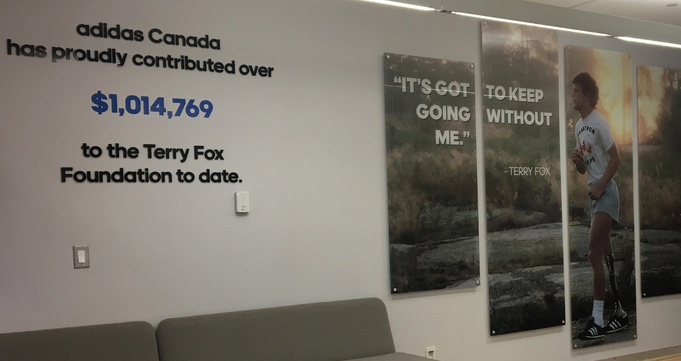 adidas Canada meeting room If you want to make a difference and want to see Janette Wilson shave her head, you can donate to Team Wilson to support the cause and help her reach her goal.
Thank you, Janette, for your continued support of the Burlington Terry Fox Run. We are also grateful to adidas for helping Terry over 40 years ago and continuing to keep his dream alive today.
Sponsor Team Wilson:

 By Staff By Staff
August 24th, 2020
BURLINGTON, ON
You may have seen some of them – the Terry Fox Posters in the bus shelters around town.
There will be some lawn signs and the display case at city hall will include Terry Fox material.
 Each of these women had their own reasons for running this race and each ran it in their own way. Hundreds do just that during the Terry Fox Run for Cancer Research The annual Run was to take place in September – but got Covid cancelled.
That hasn’t stopped the people who do the fund raising from getting out there and getting those dollars in for the critical research.
The medical research community has done some really fine work – tens of thousands are alive today because of that research which has been due directly to the people who raise money and do that run.
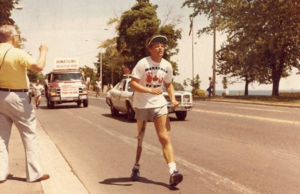 For Burlington Terry running through Burlington was the beginning of a 40 year relationship. Burlington has had a special relationship with the Terry Fox Foundation – starting a year or two after the Run ended in Thunder Bay.
Craig Gardner, the chair of the Burlington Run this year has been working on every possible way to get people out and doing their Run.
 The monument is a Burlington statement – one that the city is very proud of having. He recently told the Gazette that initially before covid-19 he was hoping for $130K which would be their best year ever.
Last year was their second best year ever $121K.
2005, the 25th anniversary was the best year at $127K.
Then, with covid-19, people told us ½ of last year would be a reasonable target so $60K.
Now with four weeks to go and already $24K donated, they think they might hit $100K.
There is one bigger event planned for the adidas person Janette Wilson which could bring in $20K or more alone if they can pull it off.
The Terry Fox T shirts have run into some Covid bumps as well.
When you are out for a walk in Spencer Smith Park and you see the Terry Fox marker – I suspect you do what most people do – you pause and remember when you became aware of that magnificent young man.
Let’s not let him down.

 By Pepper Parr By Pepper Parr
August 24th, 2020
BURLINGTON, ON
Reflecting the concern of parents across the province Chair of the Halton District Public School Board wrote the minister of Education to once again ask for some clarity on what the province expected of the school boards.
Using language that is seldom seen at this level the trustee wrote: “We can’t afford to get rental spaces, we have to arrange transportation and we have to do this within, what, two weeks?”
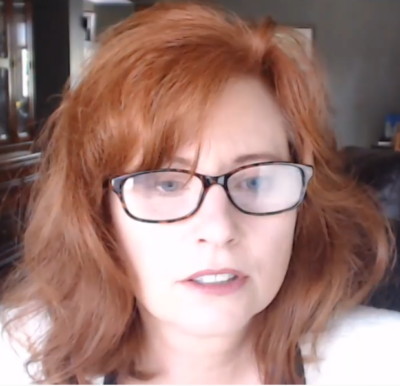 Andréa Grebenc: “Minister – words matter” Andréa Grebenc, Chair of the Board of Trustees, Halton District School Board said what many have wanted to say:
“The Trustees of the Halton District School Board are greatly concerned and seeking clarification regarding a number of items that are critical for back to school planning and ensuring stability and confidence in public education. It is an understatement to note that there is heightened stress among all parties in the education sector and beyond due to the ongoing pressures and concern about COVID-19 and keeping everyone safe and healthy. While the health crisis evolves and demands flexibility, now is a time for collaboration and clarity of vision.
“In your August 13 announcement, there were several items that are concerning:
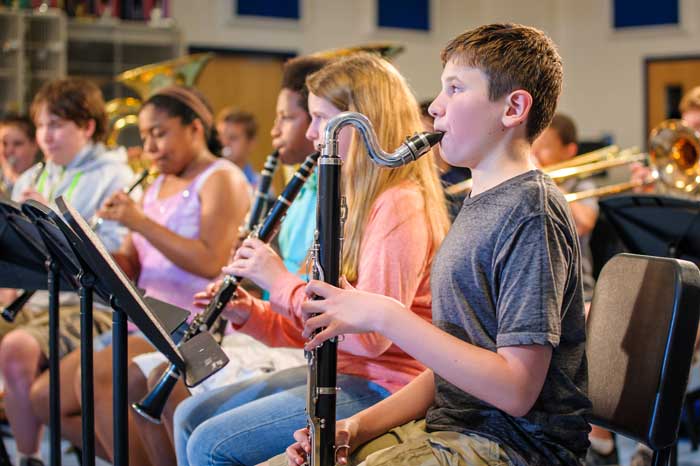 There will be no music classes as long as the virus is within the community and no vaccine. The well-being of students, staff, families and the community is the highest priority. In your announcement, you noted that the Province’s Medical Officer of Health has signed off on the current return to school direction regarding existing class sizes in elementary.
You also stated that Boards have the choice to implement greater distancing (finding new spaces) and smaller class sizes than are in that guidance. This is highly confusing and puts our Board in a very difficult position. Elementary class sizes for elementary grades has been a source of broad contention with the Province’s return to school direction to Boards. The announcement created an expectation that would be nearly impossible to meet, particularly before September 8. In Halton, over 1200 new teachers would be required to lower elementary class sizes to 15, and additional space would need to be sourced and outfitted, transportation arranged, etc. In addition to a multitude of logistical challenges, and a lack of rental spaces in areas of need, it is anticipated that the cost to do so would be well in excess of the amount our Board could access from reserves.
Boards are able to utilize a portion of their own financial reserves to implement changes for the upcoming school year. In Halton, reserves have been built over a number of years and earmarked for other high need situations such as upgrading facilities, a home-grown solution to a lack of adequate funding sources for aging schools and administrative buildings.
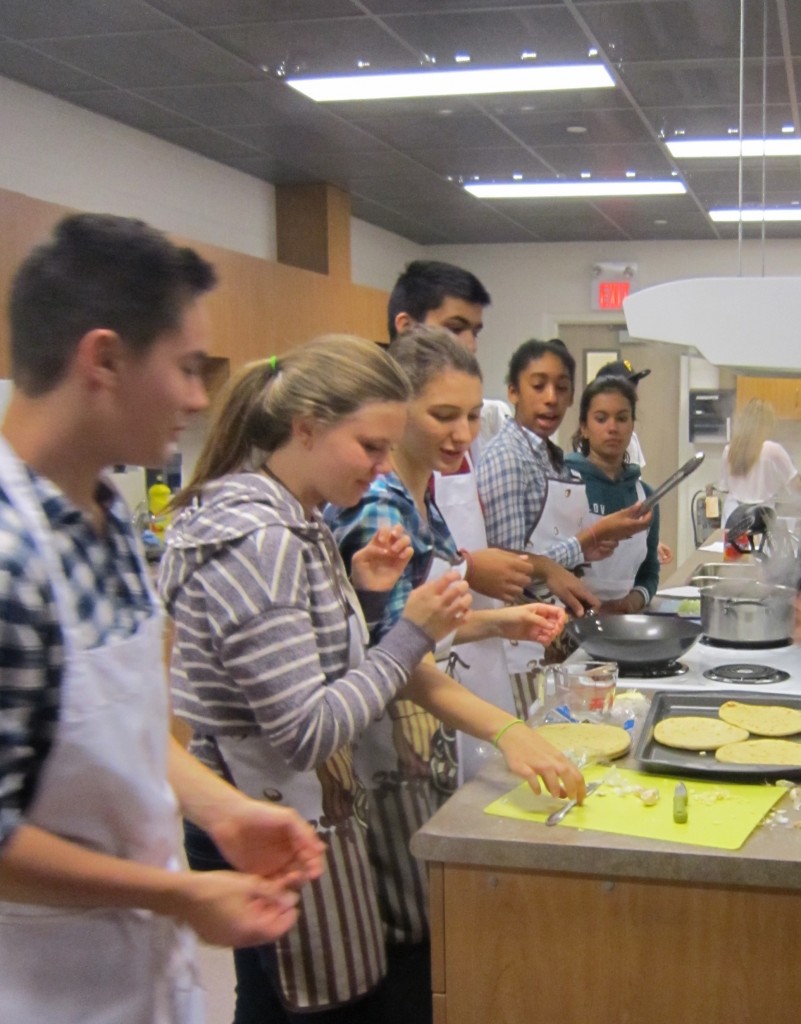 This kind of training isn’t going to be possible in September. In the same announcement, you noted a $50M investment to upgrade/address HVAC systems across the province. While additional investment is appreciated, with 72 Boards in Ontario of varying sizes and needs, it is difficult to say how much would flow to each board. For context, to retrofit an older secondary school with a partial air conditioning system has cost in excess of $1M in the HDSB. Facilities staff have been working tirelessly during the summer months to upgrade and update these systems, and inference of lack of safety is not helpful.
Minister, you have spoken many times about working together. It is very challenging when these announcements come with no advance notice, and Boards hear about them at the same time as thousands of concerned citizens of Ontario who, in turn, expect school boards to have answers. These announcements may trigger complex revision processes that often require additional direction from the Ministry which may or may not come in short order. You have also mentioned “scaling up” a number of times, inferring that other announcements could be coming. Systems and people are under great pressure. At this time, staff need to focus on implementing plans for return to school in just over two weeks.
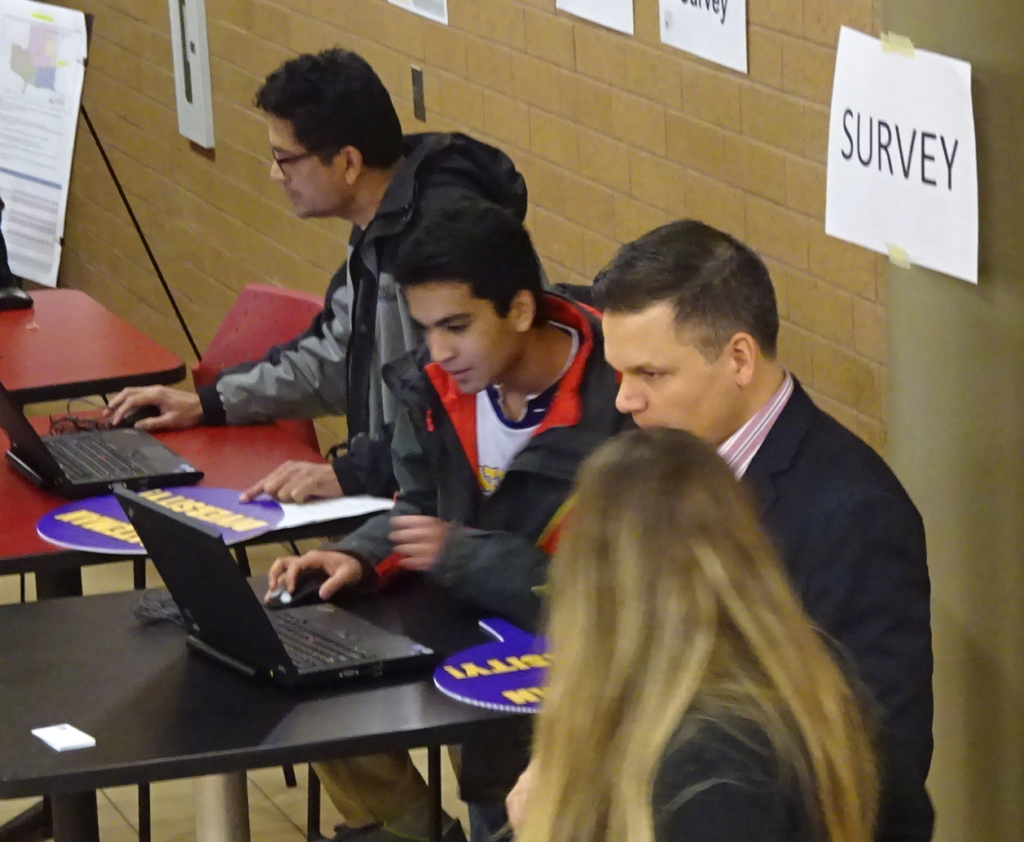 Students are going to be deprived of most of the extracurricular activity. Staff and students of Ontario school boards should be focussing on a safe return to school, and establishing the new learning and health and safety protocols that the COVID-19 pandemic requires. Overlaying this with new curricula (such as elementary math) complicates these processes and draws energy from where it is needed most. As such, the Trustees of the Halton District School Board are adding our voice to the many letters you’ve received requesting that full implementation of the new math curriculum be delayed, in favour of a measured transition with adequate preparation time for staff.
Minister, words matter. This is not a time for finger pointing. All Boards, and the communities they serve are different, and plans have been developed to reflect those unique restraints and needs. We are asking for consistency and clarity of vision so that all resources can be focussed on implementing back to school plans. The Trustees of the Halton District School Board look forward to actively collaborating with the Ministry of Education to help make the school year safe for students and staff so that students can learn, grow and succeed.
It doesn’t get more direct than that, Good on the Chair for telling it like it is.

 By Pepper Parr By Pepper Parr
August 23rd, 2020
BURLINGTON, ON
When will schools open in September?
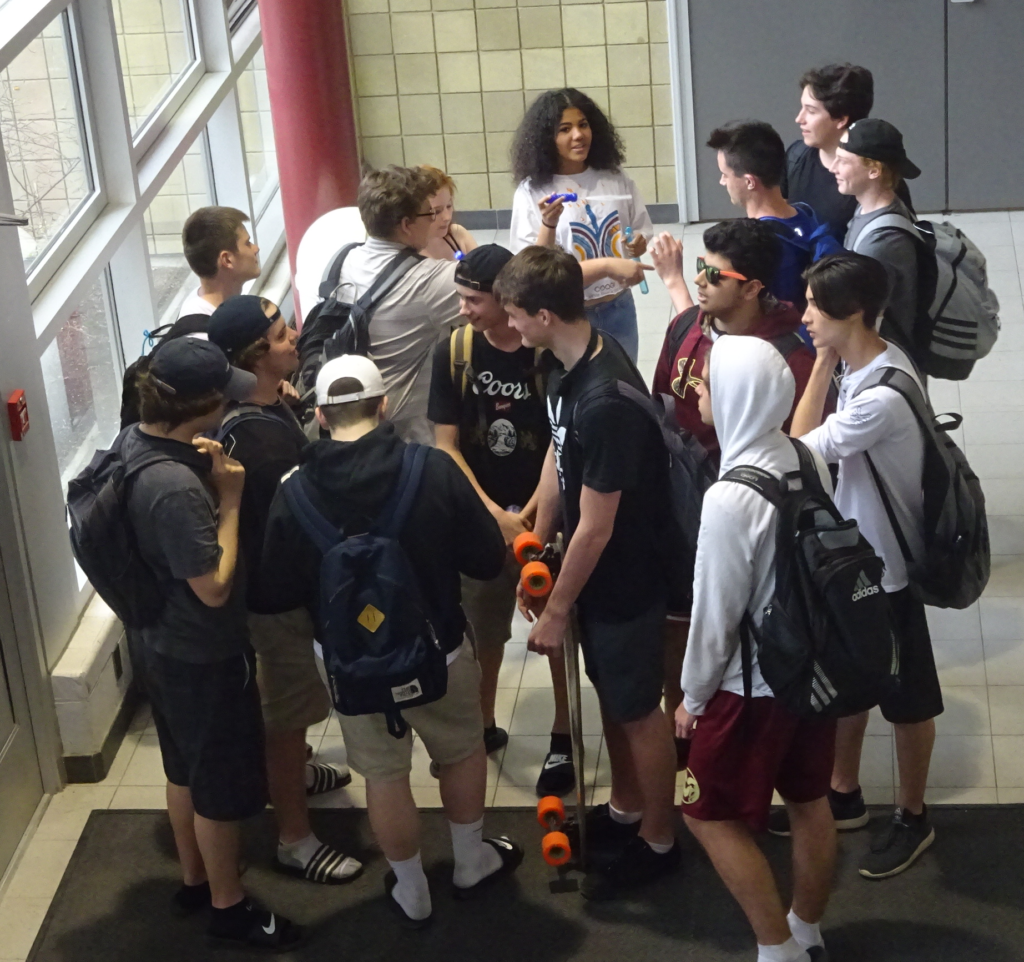 Gatherings like this inside a school will be possible IF all the students are in the same cohort. The planned date was September 8th, 2020 but there are so many concerns over the number of students there are to be in classrooms – especially at the elementary level; the province is saying that standard class sizes are the rule and parents arenpushing back really hard saying they want no more than 15 students in classrooms.
The Toronto Public School Board is looking at smaller classes as well as a start date of September 15th and staggering the begin date.
Parents are concerned. The school boards have to plan for whatever shows up on the day school starts and in many cases the school boards don’t know what a majority of the parents plan to do.
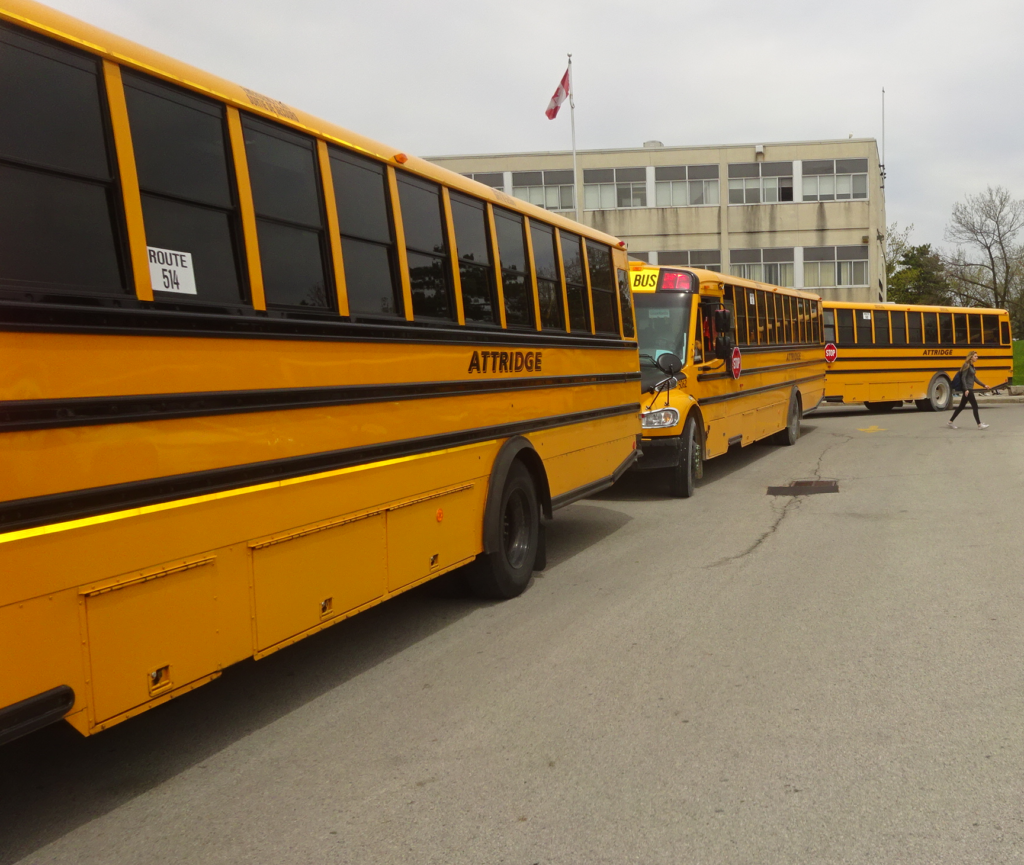 How many students will be allowed in each bus? Who will supervise the students while they are on the bus? Will they keep their children at home and home-school them? Will they form a pod with other parents and hire a teacher to run the classes? Will the parents opt for having their children taught at home – on-line with the services the Board will provide or will they send their children to school. If they choose the later – how will they get to school? No one is certain just what the school buses are going to be able to handle.
On top of all this there is the issue of face masks.
Teachers will be decked out in full PPE gear – they may look like visitors from some other planet.
It is going to be stressful on the younger students.
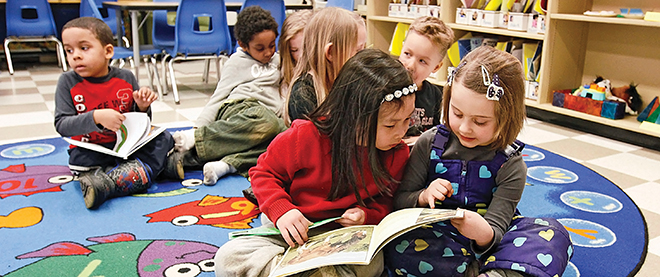 No carpets on the floor; no soft cuddly toys, no sandbox and maybe masks. Kindergarten, both junior and Senior is going to be really different.
No carpets on the floor. Masks required – maybe. No soft cloth or other covering toys, no sand box.
On Wednesday the Halton District School Board will be holding a virtual Town Hall that parents can call into and ask questions.
The Halton Medical Officer of Health will be part of the panel that will include the Director of Education and the senior superintendents that have been developing different scenarios to handle every possible situation they can think of – right up to shutting a school down if there is an outbreak
There is a very nervous parent community out there that does not feel they have the information, and assurance they need, to know that their children will be safe.
 HDSB Trustee chair Grebenc – has become much more assertive. The Halton District School board spent a long virtual trustee meeting last week and decided they would not make a decision on the wearing of masks in the classroom at every grade level – they left that decision for another day. They may not get to make that decision – there are rumblings that the province will mandate something.
The Gazette brought Michele Bogle in to create a group of parents who are serving as a sounding board. Michelle will write as often as necessary with feedback from her group representing both levels – high school and elementary. If you want to take part – email Michelle at bogle@bgzt.ca
There is a link to her first sounding board report below.
The Gazette will be monitoring the virtual Town Talk and reporting on that.
Related news story:
Parents voice their concerns about sending their children back to school.

 By Pepper Parr By Pepper Parr
August 23rd, 2020
BURLINGTON, ON
Parents who have students attending the Halton District School Board have until 4:00 pm this afternoon to submit the Survey forms sent to them by the Board asking what they plan to do in terms of which option they take in sending their children back to school.
The Board needs this data to plan for the start of the school year which is scheduled to begin on September 8th.
The information is critical to the plans the board has to make.
 HDSB Director of Education Stuart Miller The HDSB will be holding a Virtual Town Hall on Wednesday the 26th. Director of Education Stuart Miller and his senior staff will be listening very closely to what parents have to say.
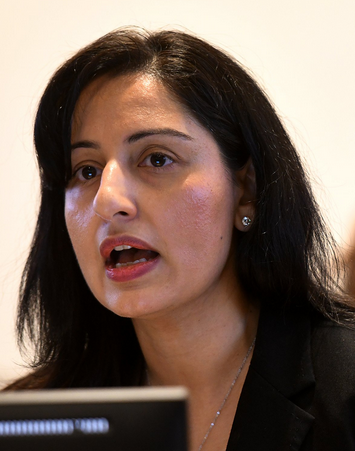 Dr. Hamidah Meghani, Halton Medical of Health. Halton Medical Officer of Health Dr. Hamidah Meghani will be part of the panel listening to parents and answering questions.

 By Staff By Staff
August 21st, 2020
BURLINGTON, ON
The Halton District School Board prepared this poster and would like every household sending students to school to tape it to the wall close to the door.
Every student should glance at the poster, run the questions through their mind and if there is a hint of a yes to any of the questions they should speak to their parents.
The is how we catch the COVID-19 virus before it catches us.
Be aware – be alert. Copy poster to memory stick – take it to Staples have them to print an 11×17 copy
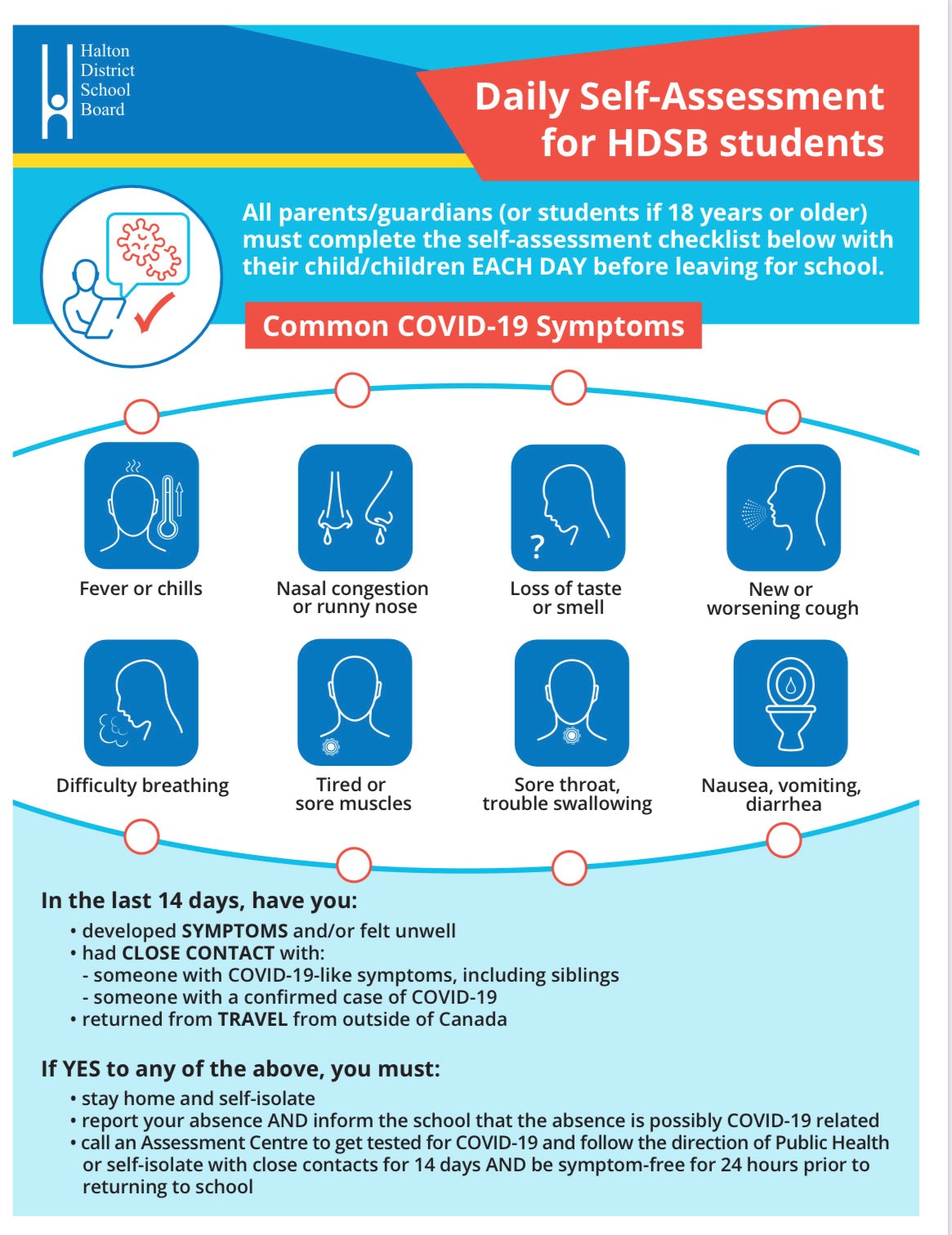

 By Pepper Parr By Pepper Parr
August 20th, 2020
BURLINGTON, ON
How much damage was there?
 The Region is now in Stage 3 of the State of Emergency. All kinds of commercial activity was opened up to help Halton Region and local municipalities understand how the COVID-19 pandemic has affected businesses; Halton has put together a short 10-minute survey for local business owners and operators. The Region is now in Stage 3 of the State of Emergency. All kinds of commercial activity was opened up to help Halton Region and local municipalities understand how the COVID-19 pandemic has affected businesses; Halton has put together a short 10-minute survey for local business owners and operators.
This joint survey is being conducted by Halton Region Economic Development, in partnership with the Burlington Economic Development Corporation (BEDC), and the Economic Development Divisions of the Towns of Halton Hills, Milton and Oakville.
Your input is valuable. The survey results will be shared with Halton Region and the local municipalities to inform how we can support businesses and help our local economy recover from the COVID-19 pandemic.
How long will the survey take?
We understand that your time is valuable! The survey should take less than 10 minutes.
Who should complete the survey?
We are looking for feedback from business owners, operators or management executives with knowledge of the organization’s operations and forecasts.
Take the survey – CLICK HERE
Survey Deadline
Please complete the survey by Friday, August 28, 2020.
Please note that this is a one-time business survey on how the COVID-19 pandemic has affected businesses in Halton. It does not replace Halton Region’s annual Employment Survey, which will start in September 2020.

 By Pepper Parr By Pepper Parr
August 19th, 2020
BURLINGTON, ON
What do parents think they want to do about sending their kids back to school in September?
The Halton District School Board has been in session since 1:00 pm today – they expect to be there until at least 7:30 pm.
A table that was presented a few minutes ago suggests where some of the parents are:
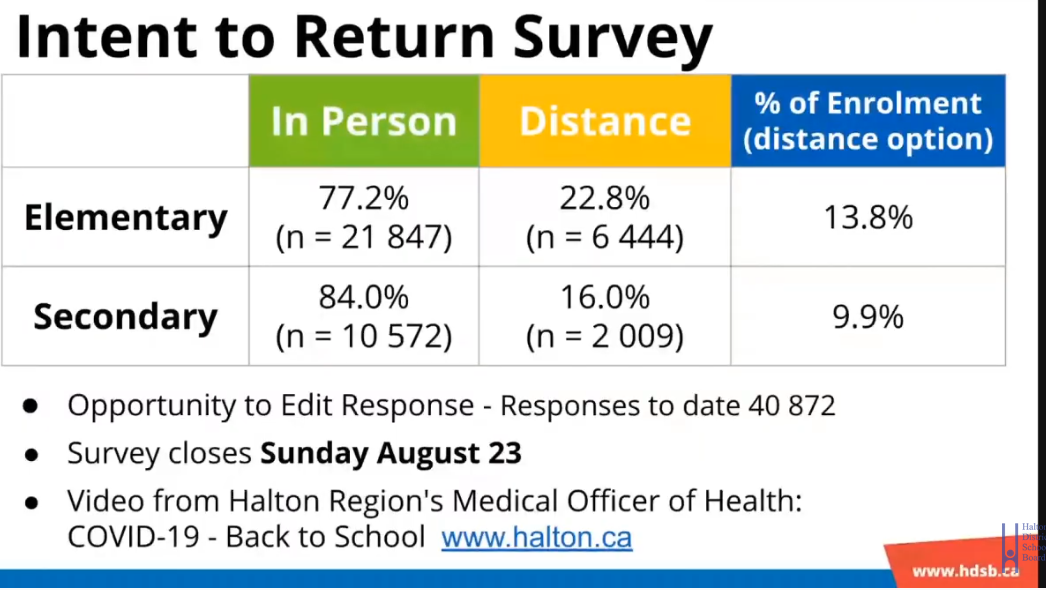 The numbers total 40,872 students; the Board reports that there are 65,000 students in classrooms enrolled in the Halton District School Board
Is someone sending out for pizza?

 By Staff By Staff
August 19, 2020
BURLINGTON, ON
The Halton District School Board is thinking very seriously about Outdoor Learning for as many schools as possible.
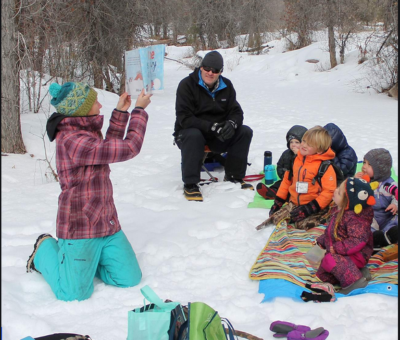 Is this what they are thinking about? They aren’t talking about just the nice Indian Summer weather we get.
Trustees have asked for a report on what can be done and what might the cost be.
There is $200,000 in the kitty for this type of thing along with some COVID-19 specific funding.
Will the mitts the kids have to wear be covered in that funding?
Report will be ready for late September.
All the trustees were on for this.

 By Staff By Staff
August 19th, 2020
BURLINGTON, ON
We are now in Stage 3 of the Emergency declared by the City and the Province.
The day those declarations were made everything shut down. Many thought it was going to be a short term thing – when the end of that first month came people began to realize the pandemic was going to really hurt many in the commercial sector.
We got to stage three almost a month ago – things didn’t immediately open up. It was slow, very slow for many.
Restaurants were permitted to offer service inside the premises and not just outside on a patio or under a tent.
The mask by law was extended to January 2021 – it was temporary when it was first passed.
Groups were limited to 5 people – that got expanded to 10.
Larger groups were permitted – up to 50 people, and movie theatres and bowling alleys were opened.
City hall was getting ready to have some people back at their desks.
The situation with schools is close to chaotic with different boards of education taking different approaches.
Where is the general public in all this?
A survey done in June on public anxiety, which is growing and any possible opening up of the border with the United States revealed that public sentiment falls into five unique groups
20% Ready to Go – less likely to wear masks or follow rules
19% Nearly Ready – watch data from Govt & Health
23% Want to, But Can’t – some barriers – money, child care etc.
18% Content – OK staying and working at home
20% Afraid – want to see control and penalties, think situation is worse, lack of trust
What can Businesses do to help build that trust and bring about a change in public trust and bring them into the commercial world?
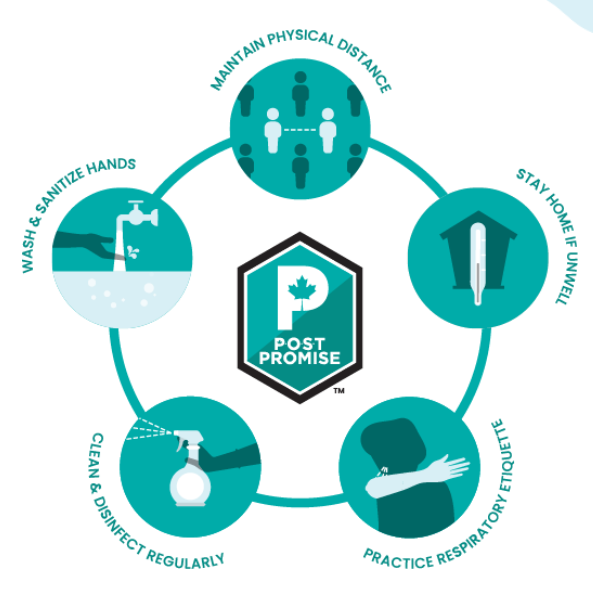 This decal is available to every restaurant in the country. They just have to sign up to the promise. Look for it – ask why it isn’t there if you don’t see it. Model the right behaviour – masks and social distancing: this is not a celebration, demonstrate caution
Provide Credible information and validate safety (Post Promise)
Visual is best – show experience rather than tell – videos/tours
Tone – enforcement, education, help, diligent follow-up.
The hospitality sector, which took the hardest hit during the lockdown is slowly coming back – the emphasis is on the slowly part.
Public confidence isn’t as high as it needs to be. Have you seen the POST promise in the restaurants and bars you go to?

 By Pepper Parr By Pepper Parr
August 19th, 2020
BURLINGTON, ON
The front line people are the people that really get it.
It’s in front of them every hour of every day.
A lot of those front line people are volunteers – that is what community and serving is really all about.
Robin Bailey, Executive Director of the Burlington Food Bank is participating in the annual Feed Ontario conference which will happen this week online in a virtual format. Today’s course is about “Getting Ready for the 2nd Wave”.
 Beth Martin Snook – Burlington Together Beth Martin Snook from Burlington Together made some comments earlier this week that bear repeating.
“As we head into September and beyond, let’s keep in mind that Covid-19, like the common cold, is operating solely in its best interest.
 Corona virus: They are really good at spreading. “Corona viruses are really, really good at what they do, which is: spreading.
“We WILL see new cases as schools reopen, it WILL spread. This isn’t a moral failing on anyone’s part. It’s just a virus, doing what it does best.
“Our best defenses continue to be hand washing, social distancing, masking, and supporting each other through what continues to be an extremely stressful moment in time.
“We may very well see a second wave, and if we do, we will be here to support the Burlington community and provide reliable resources.
“The Burlington Food Bank IS and WILL be ready to support our community.
“If you are in need or know of someone who could use our help PLEASE have them email us at info@burlingtonfoodbank.ca or call 905-637-2273 to make arrangements to have food dropped at their door or they can now pick it up. If you live in Burlington, we are here to help.”
Grow to Give –
Grow a row
About the Burlington Food Bank –
Donate –

 By Pepper Parr By Pepper Parr
August 18th, 2020
BURLINGTON, ON
The Halton District School Board is planning on holding a virtual Town Hall meeting to bring parents up to date on September school opening.
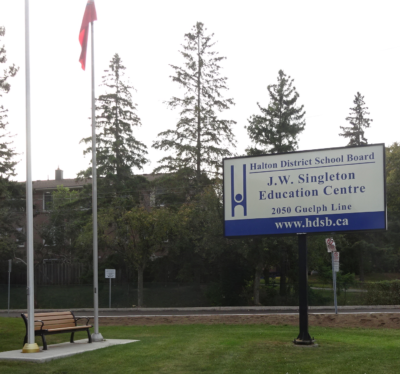 The intention was to hold the event Thursday or Friday of this week but HDSB officials said “we just don’t have enough information from the Ministry and hope to do the Town Hall virtually next week.” The intention was to hold the event Thursday or Friday of this week but HDSB officials said “we just don’t have enough information from the Ministry and hope to do the Town Hall virtually next week.”
In a telling quote, an Official who asked not to be identified said: “The sands are shifting.”
School Boards across the province have been struggling to deliver on the directions the province has given them.
Parents are not happy with the options they have, school boards have found that they are not getting the opportunity to use the resources they have to deal with the challenge they face.
They were told just days ago that they can tap into their financial reserves; HDSB has $40 million that they need government permission to spend. They have been given permission to spend $6 million on PPE.

 By Pepper Parr By Pepper Parr
August 17th 2020
BURLINGTON, ON
The Recreation Services Redesign plan for the fall to slowly reopen more recreational facilities including rinks and indoor pools to increase the number of recreational programming, activities and rentals available to Burlington residents was approved by City Council lasty Thursday at a Special Meeting.
Earlier in the day a Standing Committee heard delegations from a number of people who outlined the impact the COVID-19 rules were having on the private facilities sector of the sports community.
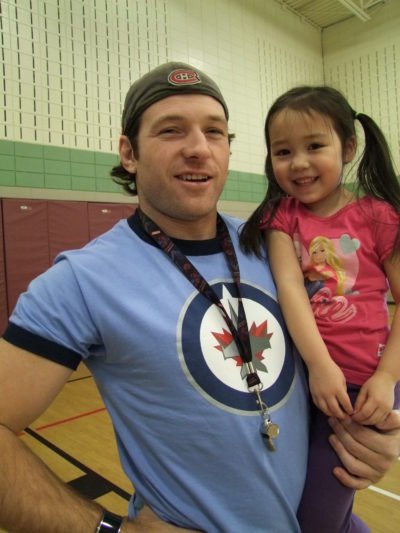 Coach Dave Coach Dave, taught Councillor Nisan enough to get him to the point where he was a respected athlete during his high school days. Councillor Kearns was listening carefully while Coach Dave delegated and then spoke up and said: “So you’re the Coach Dave my kids talk about. “Who are your kids asked the coach? “That will be a conversation for another time” said Kearns
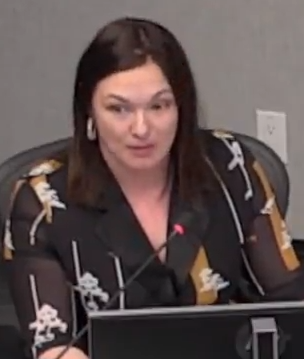 “That will be a conversation for another time” At that point all Coach Dave needed was one more supporter and he could have gotten almost anything he asked for. Councillor Galbraith, who runs a fitness club piped in and said he fully understood the financial pressure on the private facility locations.
City Council approved a rental rate reduction of 25 per cent and added more funds to support Recreation Fee Assistance.
The rental rate reduction will help off-set the reduced revenue recreation providers are experiencing due to smaller group sizes, cleaning and additional costs associated with COVID-19.
Recreation Fee Assistance
Recreation is for all, regardless of financial situation. Recreation Fee Assistance is funding made available to resident individuals or families who need help to pay for City of Burlington recreation programs.
For more information or to apply see burlington.ca/feeassistance. You can also leave a confidential voicemail message at 905-335-7738, ext. 8501 and staff will return your call to assist you.
Arenas and Indoor Pools
Some indoor pools and rinks will open for fall programs and rentals.
Indoor pools opening will include Angela Coughlan and Centennial Pool. Nelson Pool, weather permitting, will stay open until Thanksgiving, Oct. 12, 2020.
Central Arena is open. Appleby Arena ice pads 3 and 4 will open soon. Other arenas will open once demand for ice rentals reach 40-60 hours per week at each arena.
Stay tuned for recreational skating programs to resume later this fall.

|
|
 By Staff
By Staff
 Connie Price, right and Penny Hersh, left with Lisa Lunski do the handover of the last batch of the more than 3,000 masks that were made.
Connie Price, right and Penny Hersh, left with Lisa Lunski do the handover of the last batch of the more than 3,000 masks that were made.


















 By Burlington Terry Fox Run Committee
By Burlington Terry Fox Run Committee














 Ray Rivers, born in Ontario earned an economics degree at the University of Western Ontario and a Master’s degree in economics at the University of Ottawa. His 25 year stint with the federal government included time with Environment, Fisheries and Oceans, Agriculture and the Post office. Rivers is active in his community; he formed the first
Ray Rivers, born in Ontario earned an economics degree at the University of Western Ontario and a Master’s degree in economics at the University of Ottawa. His 25 year stint with the federal government included time with Environment, Fisheries and Oceans, Agriculture and the Post office. Rivers is active in his community; he formed the first 























 The Region is now in Stage 3 of the State of Emergency. All kinds of commercial activity was opened up to help Halton Region and local municipalities understand how the COVID-19 pandemic has affected businesses; Halton has put together a short 10-minute survey for local business owners and operators.
The Region is now in Stage 3 of the State of Emergency. All kinds of commercial activity was opened up to help Halton Region and local municipalities understand how the COVID-19 pandemic has affected businesses; Halton has put together a short 10-minute survey for local business owners and operators.






 The intention was to hold the event Thursday or Friday of this week but HDSB officials said “we just don’t have enough information from the Ministry and hope to do the Town Hall virtually next week.”
The intention was to hold the event Thursday or Friday of this week but HDSB officials said “we just don’t have enough information from the Ministry and hope to do the Town Hall virtually next week.”






